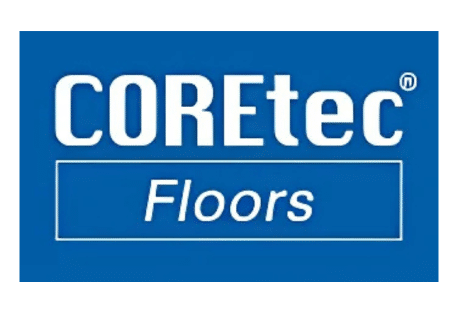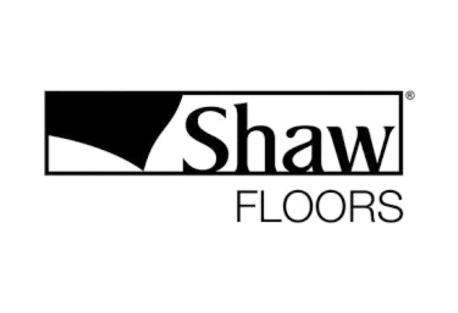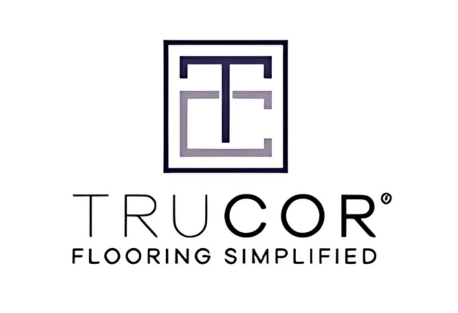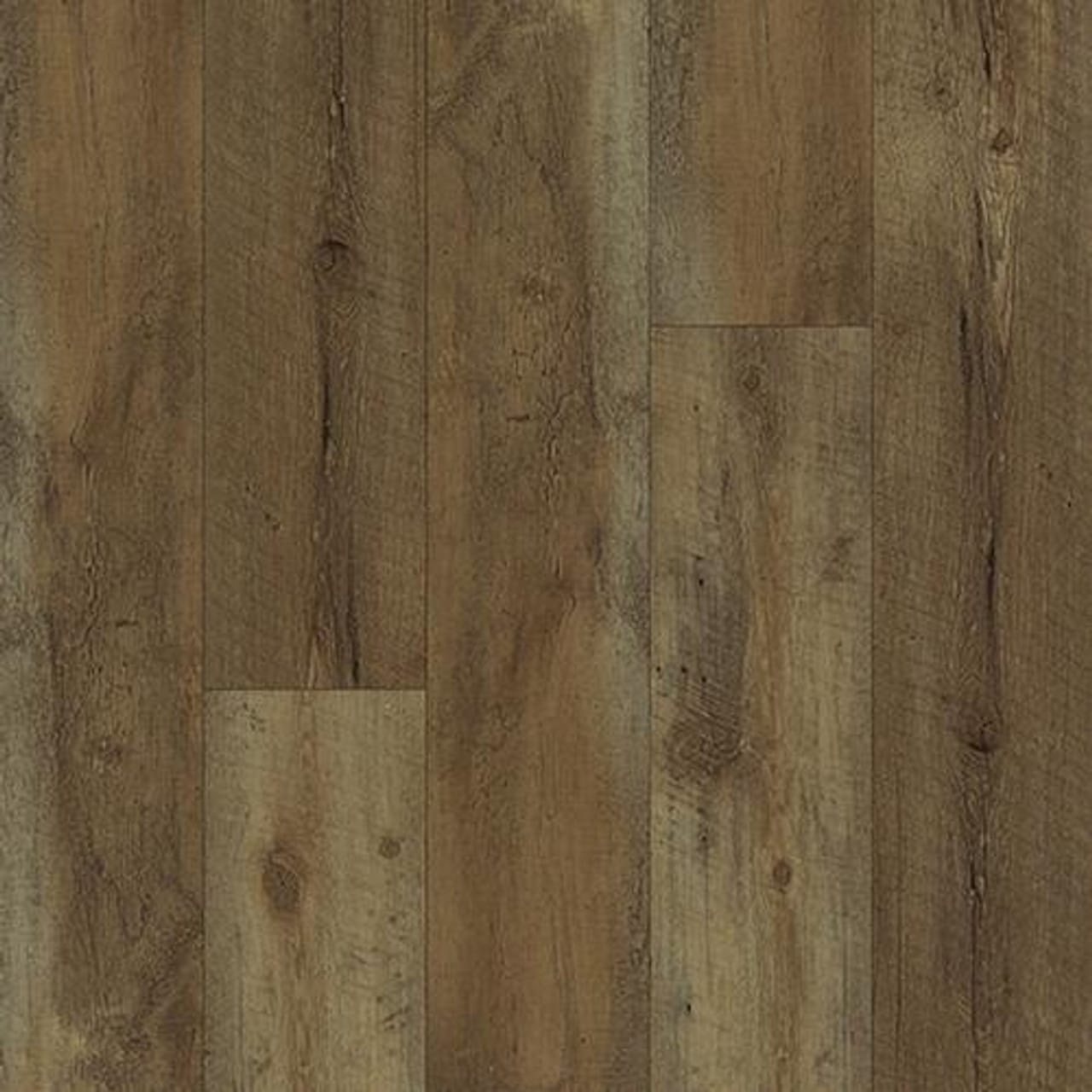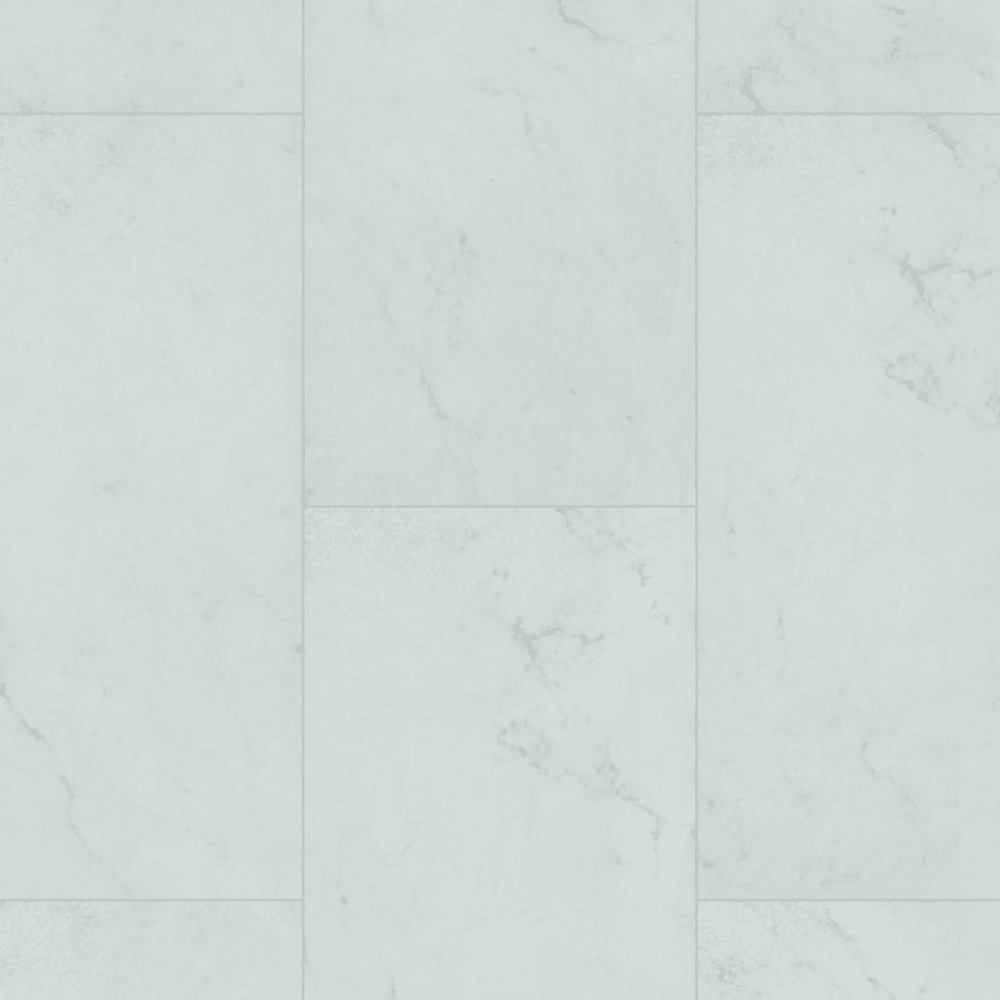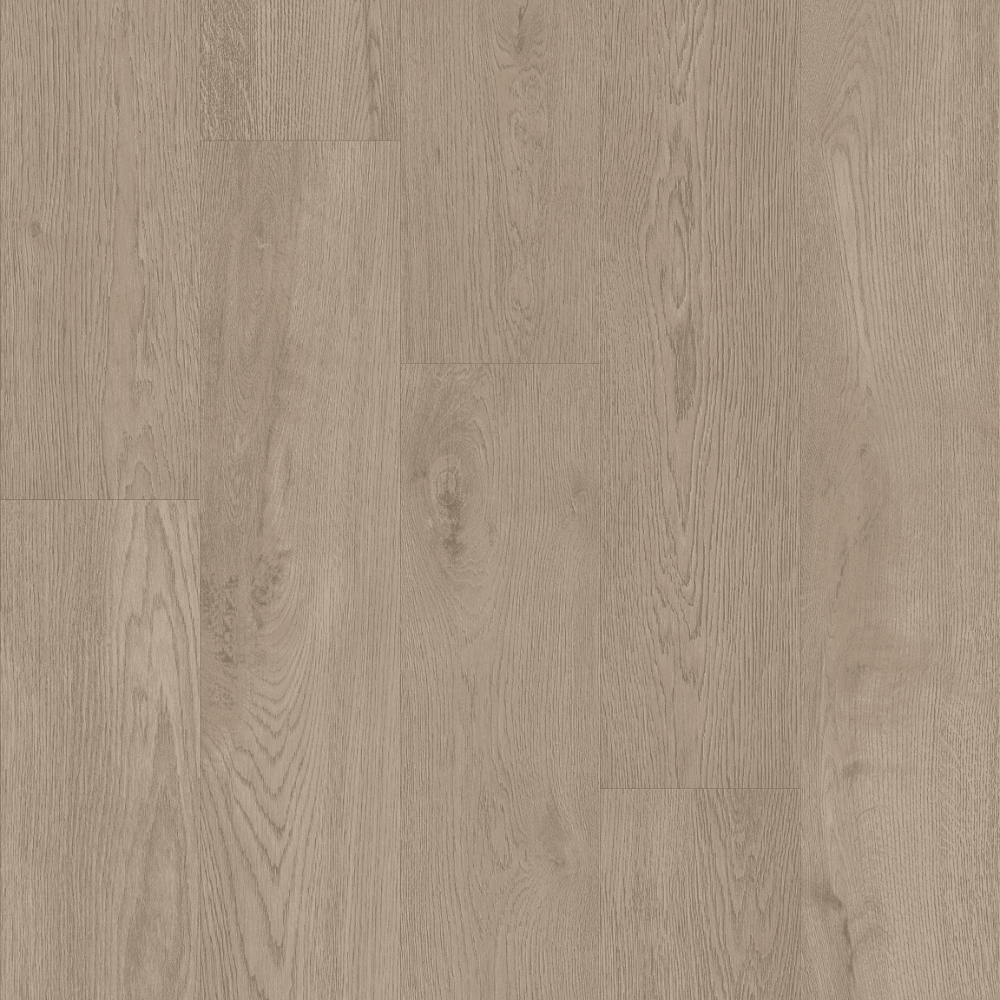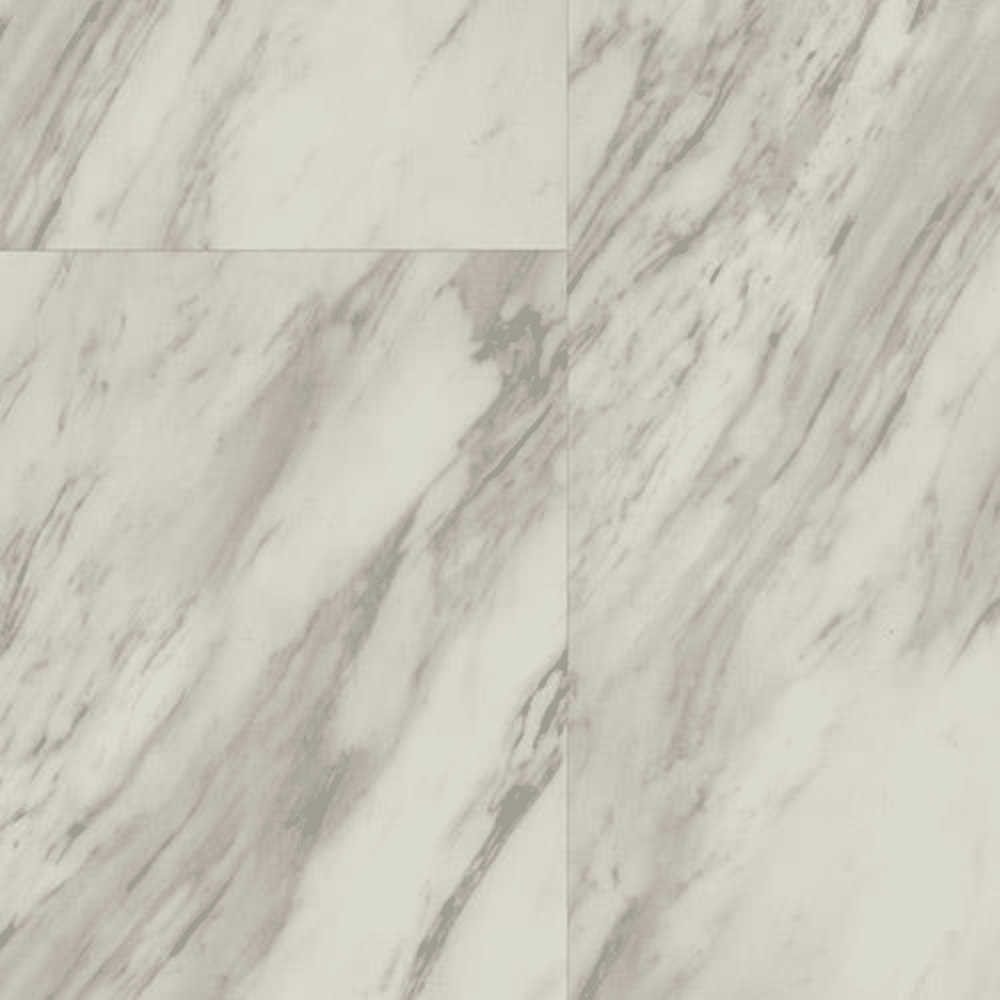Luxury Vinyl Flooring
Luxury Vinyl Flooring (LVF) has surged in popularity over the past decade, now outperforming floors like hardwood, tile, and carpet as the top choice for new homes and remodels across the U.S.
Vinyl flooring closely mimics the look and texture of real wood or stone, providing an authentic appearance without the drawbacks of the natural materials.
It is 100% waterproof, won’t warp or swell with moisture, and offers great scratch resistance and durability, especially in high-traffic areas.
Many lvfs use a click-lock design, where planks snap together without the need for glue or nails. This makes installation easy for DIYers, with no professional tools or experience required.
This floor can be laid directly over tile, hardwood, or concrete as long as the subfloor is clean, dry, and level.
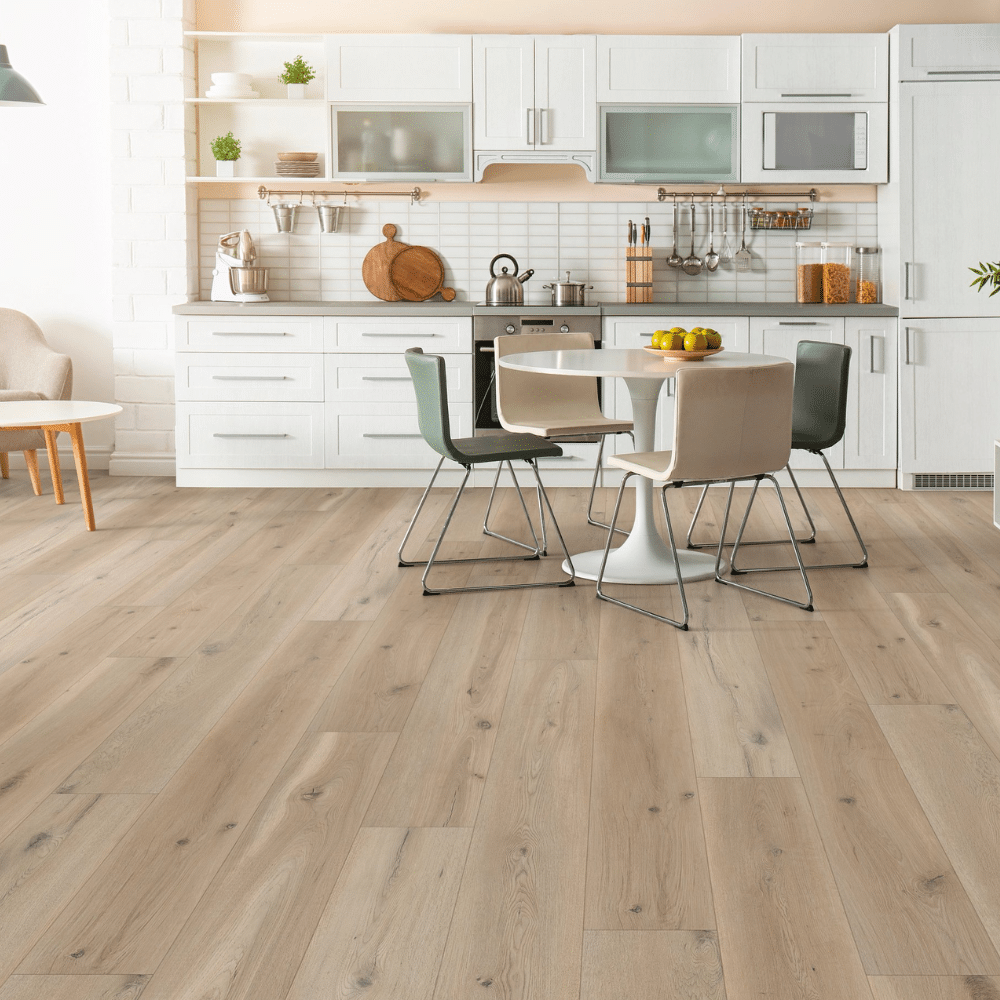
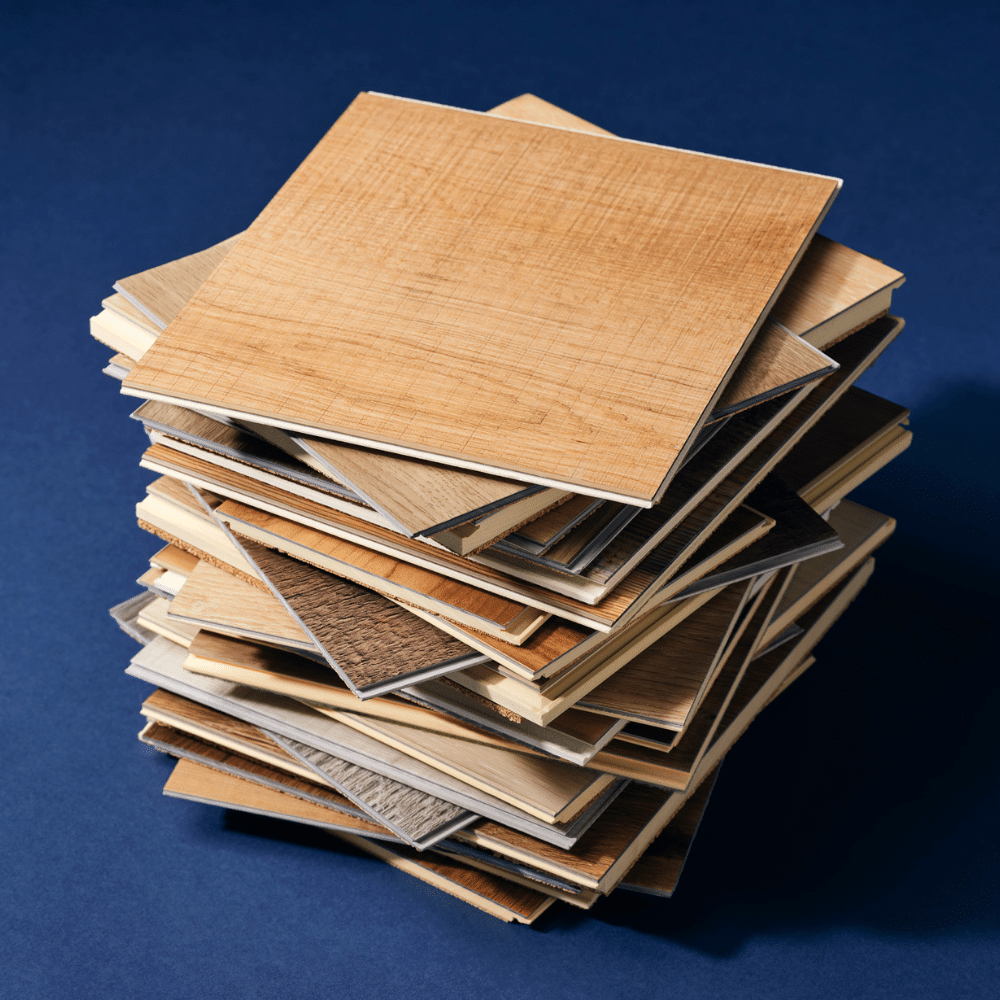
Unlike hardwood, luxury vinyl flooring never needs refinishing, sealing, or special treatments.
Thanks to its protective wear layer and water-resistant surface, cleaning is effortless: simply sweep regularly and mop occasionally with a gentle cleaner.
What really sets LVF apart is its price point. It typically costs 50-80% less than hardwood, and when you factor in installation costs, the total savings can be much more significant.
If you’re considering luxury vinyl flooring for your home, keep reading to explore the different types, how they compare, and which option will suit your space best.
History
The foundation for modern luxury vinyl flooring dates back to 1926, when chemist Waldo Semon developed a method to plasticize polyvinyl chloride (PVC), turning it from a brittle, rigid material into a flexible and durable compound.
Within a few years, PVC was being used in flooring for industrial and commercial applications.
By the 1940s, advancements in manufacturing made vinyl flooring more affordable and accessible for homeowners. Vinyl sheets and tiles quickly replaced wood and linoleum in moisture prone areas like kitchens, bathrooms, utility rooms,
The industry saw a major shift in the 2000s with the development of Stone Plastic Composite (SPC) and Wood Plastic Composite (WPC) cores.
These innovations improved both durability and comfort, paving the way for today’s Luxury Vinyl Plank (LVP) and Luxury Vinyl Tile (LVT) products.
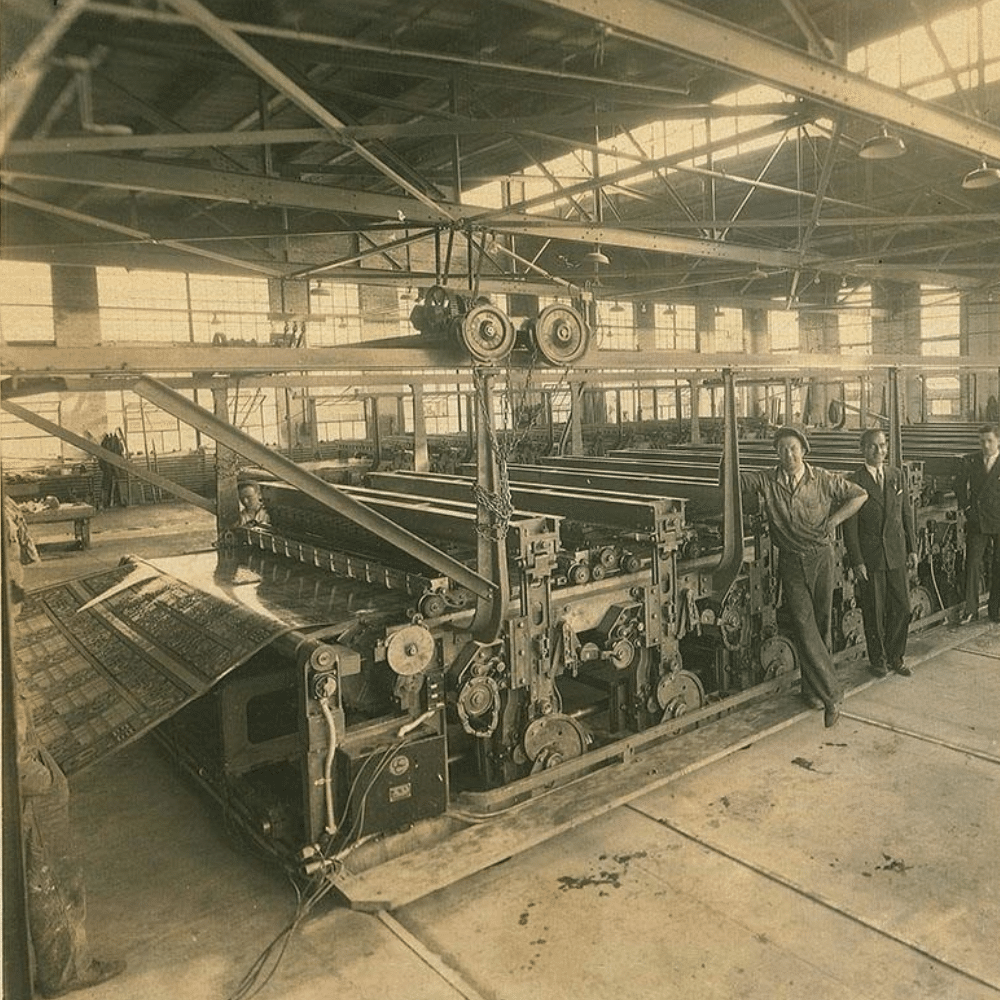
What is the difference between SPC and WPC?
When choosing luxury vinyl flooring, it’s important to understand the two main core types: SPC and WPC. Both offer waterproof durability and strong performance, but they’re made from different materials that impact how they feel underfoot and where they’re best suited. Understanding these differences is key to selecting the right flooring for your home and lifestyle.
SPC
A Stone Plastic Composite (SPC) core is made from limestone powder, stabilizers, and PVC that form a dense, rigid core that delivers exceptional durability.
Its solid construction resists dents, impacts, and temperature changes, maintaining stability even in tough conditions.
It provides firm support and performs well over uneven subfloors or in high-traffic areas where strength is a priority.

Recommended Spaces for SPC
- Entryways, hallways, kitchens, mudrooms
- Basements, bathrooms, laundry rooms
- Under heavy furniture or appliances
- Sunrooms or rooms with temperature swings
- Retail stores, offices, and other light commercial spaces
WPC
A Wood Plastic Composite core (WPC) is made from a blend of wood flour, plastic polymers, and foaming agents, creating a lightweight core with a softer, warmer feel underfoot than SPC.
Its cushioned, flexible surface makes it comfortable to walk on and ideal for bedrooms, living areas, and upstairs spaces where sound absorption is a plus.
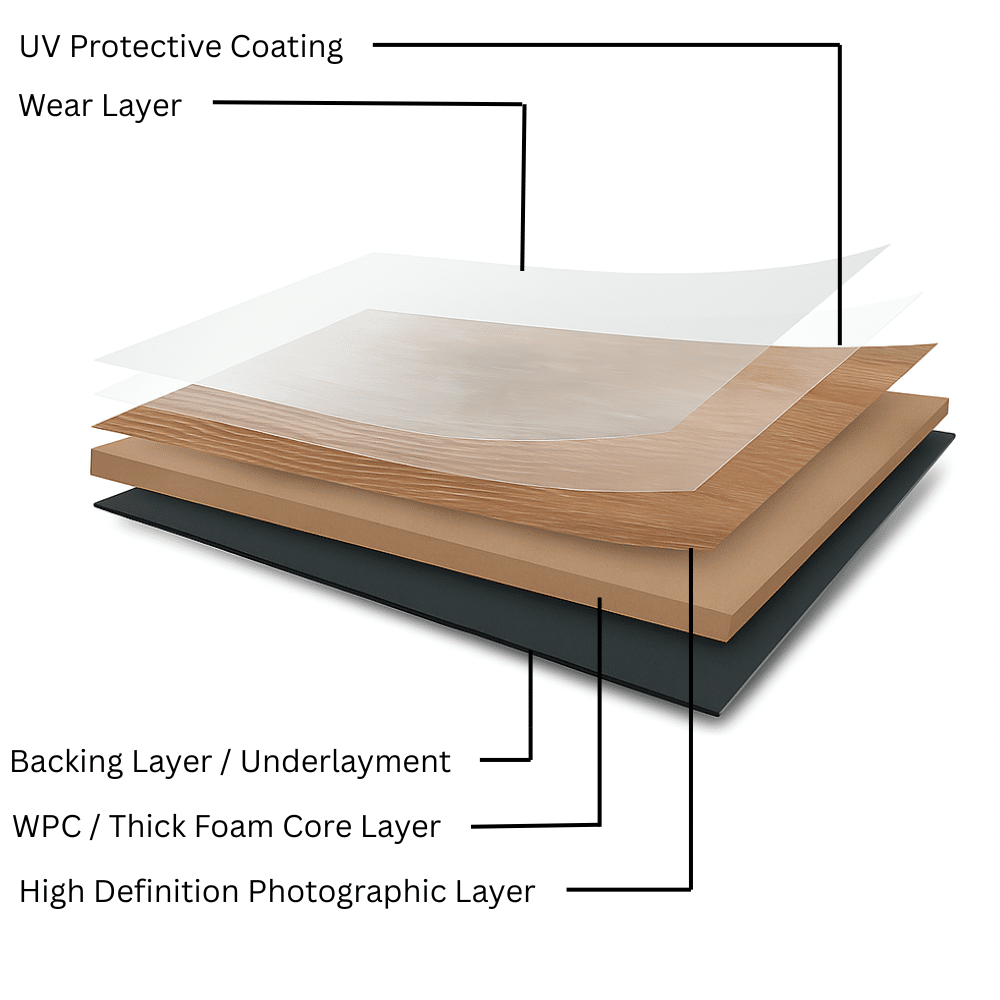
Recommended Spaces for WPC
- Bedrooms, living rooms, family rooms, home offices
- Upstairs rooms, apartments, nurseries, shared walls
- Powder rooms, dining areas, dry basements
- Areas where comfort underfoot and sound absorption are important
- Spaces with consistent indoor temperatures
Both SPC and WPC flooring share many of the same advantages such as waterproof performance and realistic design, and understanding the practical needs of your space will help you decide which core is the better fit for your home.
LVP Vs LVT
Luxury Vinyl Planks (LVP) and Luxury Vinyl Tiles (LVT) represent the two types of luxury vinyl flooring. Each offers unique design options and functional benefits, catering to different aesthetic preferences and space requirements. Understanding their key differences will help you make an informed decision to maximize the performance and longevity of your floors.
Luxury Vinyl Plank
LVP is designed to closely replicate the look and feel of real hardwood through a combination of high-resolution imaging and textured surface technology.
Each plank features a printed film layer that captures authentic wood grain patterns, knots, and color variations, often scanned directly from real hardwood.
Many products use Embossed-in-Register (EIR) technology, which matches the texture to the grain in the image, creating a surface you can see and feel.
Matte finishes, beveled edges, and realistic plank sizes add even more depth and dimension, making it difficult to distinguish from actual wood flooring.
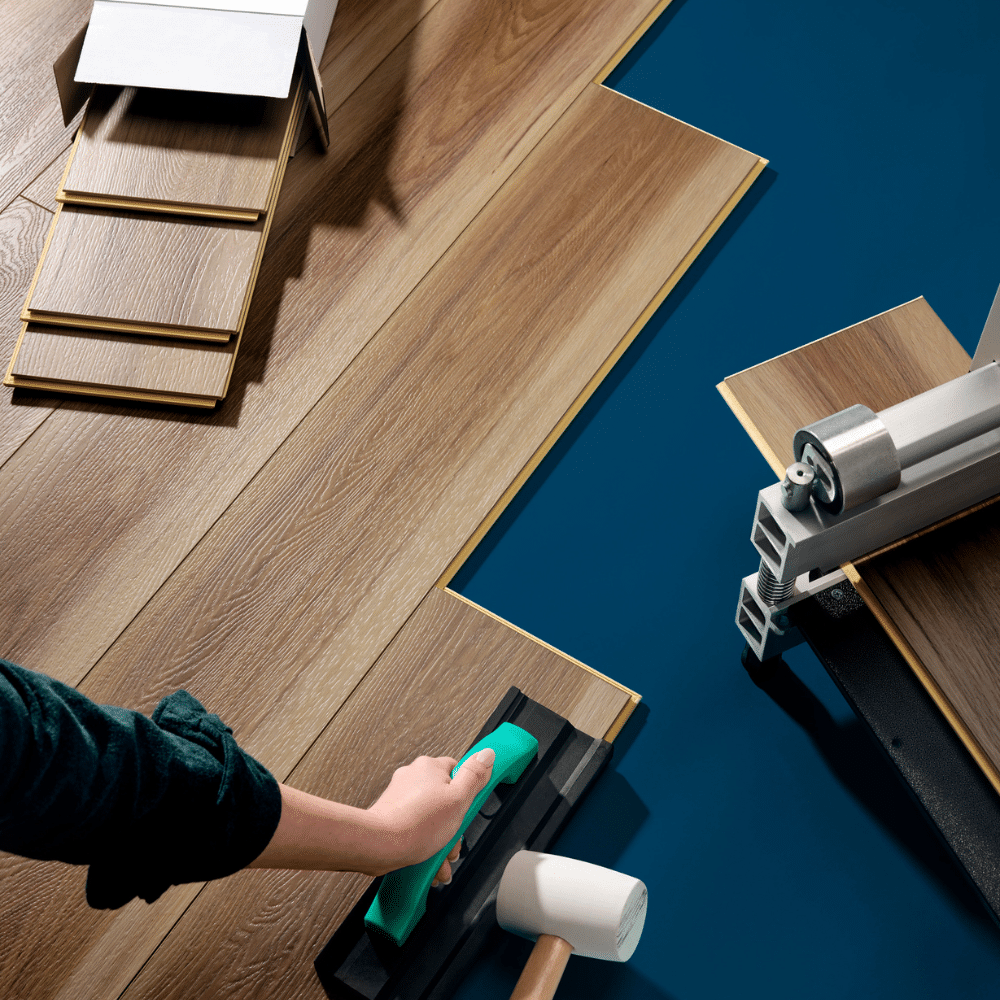
Recommended Spaces for LVP
- Living rooms and family rooms
- Bedrooms and home offices
- Hallways and entryways
- Dining rooms and dens
- Finished basements and rec rooms
- Open-concept areas where wood-look continuity is desired
Luxury Vinyl Tile
LVT uses the same layered construction as LVP but mimics other materials like stone, ceramic, and concrete.
The printed film captures authentic textures such as marble veining, slate clefts, or concrete pitting, while surface embossing enhances the realism.
LVT typically comes in square or rectangular tile formats, and many styles include grout-line visuals or beveled edges to simulate real tile installation.
With a matte finish and rigid core options, LVT offers the upscale look of tile while providing added comfort, warmth, and full waterproof durability without the cold, hard surface.
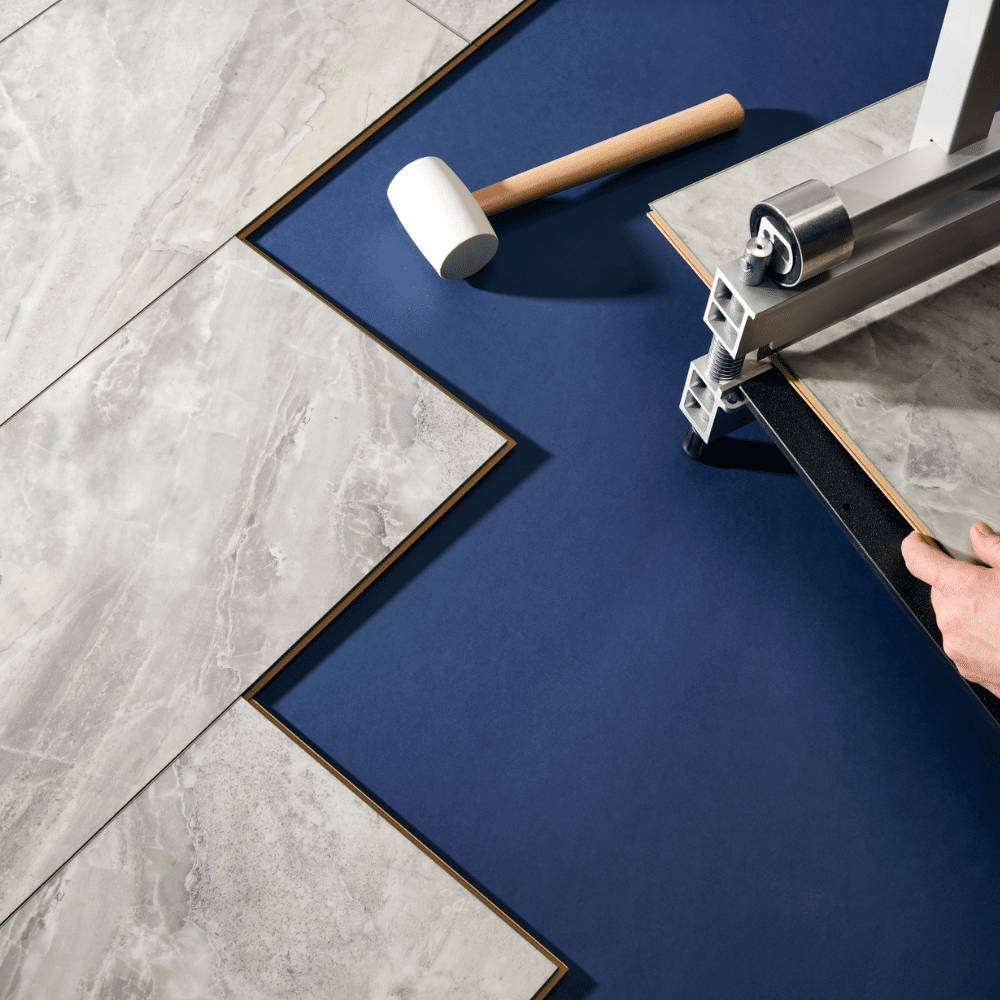
Recommended Spaces for LVT
- Kitchens and laundry rooms
- Bathrooms and powder rooms
- Mudrooms and entryways
- Commercial offices and retail spaces
- Break rooms and cafeterias
- Any area where the look of tile or stone is preferred
Both Luxury Vinyl Planks and Tiles are excellent choices, each providing the full benefits of vinyl flooring. The decision ultimately depends on your room and the style you want to achieve.
Care & Maintenance
Proper care and maintenance of luxury vinyl flooring is simple but essential to keep your floors looking pristine.
Regular sweeping or vacuuming removes dirt and other objects that could cause scratches and regular mopping with gentle cleaners preserves the finish without damaging the surface layers.
Avoid harsh chemicals, steam mops, and excessive water to protect the core, subfloor, and overall look and finish of the floor.
Make sure to use furniture pads and mats to prevent damage like dents and scratches from heavy items.
This easy upkeep not only maintains the floor’s attractive appearance but also extends its lifespan, saving you time and money on repairs or replacement.
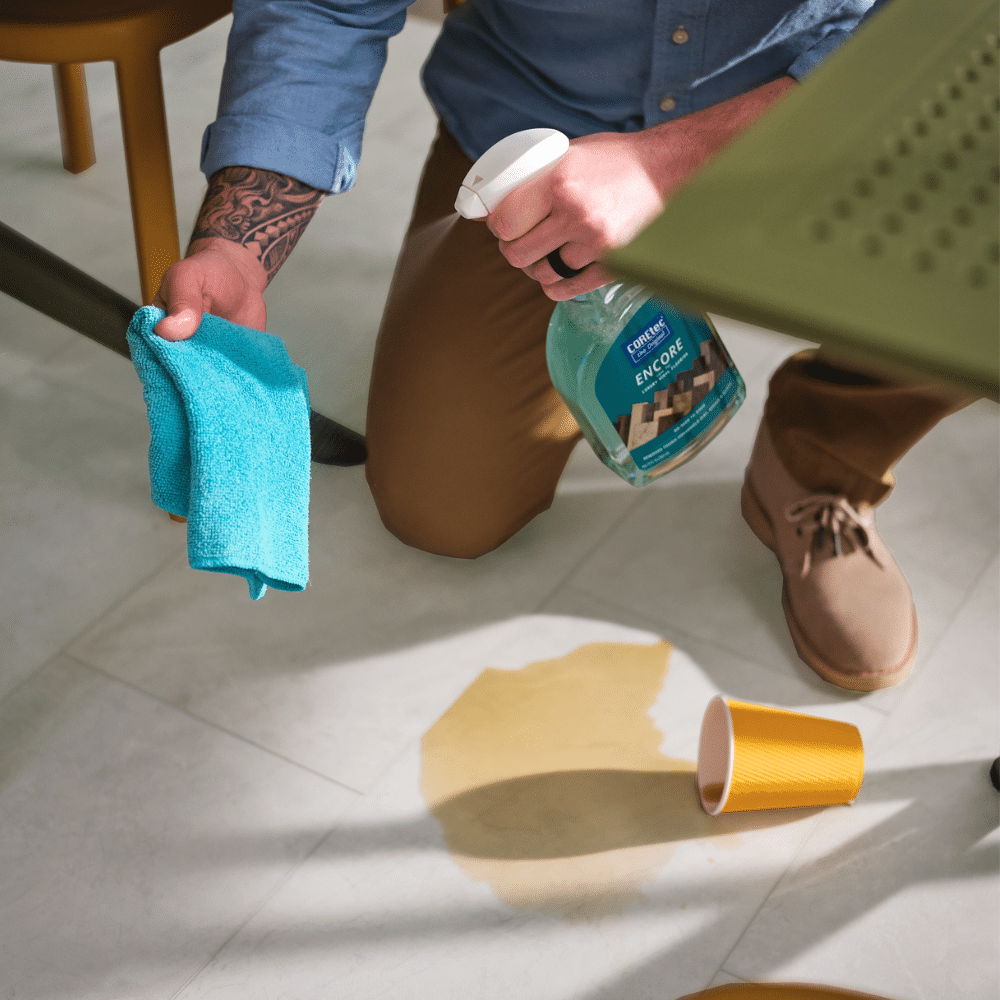
Frequently Asked Questions
How do I clean my LVF?
Sweep or vacuum regularly to remove dust and debris, then mop with a damp microfiber mop using a mild, pH-neutral cleaner made for vinyl flooring. Avoid soaking the floor with water.
What products should I use to clean my LVF?
Use gentle, pH-neutral cleaners designed specifically for vinyl floors. These keep the finish intact while effectively removing dirt.
What products should I avoid using on my LVF?
Avoid abrasive cleaners, bleach, ammonia-based products, wax, polish, and steam mops, as they can damage the floor’s surface or dull its finish.
How often should I clean my LVF?
Sweep or vacuum weekly and mop every 1 to 2 weeks or as needed, depending on foot traffic and dirt levels.
How do I prevent scratches on my LVF?
Place felt pads under furniture legs, avoid dragging heavy items, and use mats at entryways to reduce dirt and grit that can scratch the floor.
How do I remove stains or scuff marks from my LVF?
Use a soft cloth with warm water and mild dish soap. For tougher stains, a vinyl floor cleaner or rubbing alcohol applied gently can help. Avoid abrasive scrubbing.
Should I wax or polish my LVF?
No. Vinyl floors do not require waxing or polishing and applying wax can cause buildup and make the surface slippery.
How can I repair my LVF?
Minor scratches and dents can sometimes be fixed with vinyl floor repair kits, but larger damage may require replacing affected planks or tiles.
Will water damage my LVF?
Luxury vinyl flooring is waterproof and resists water damage but standing water or prolonged moisture exposure can harm seams or the subfloor. Clean up spills promptly.
Interested?
Explore our full selection of luxury vinyl flooring
We offer a full range of LVP and LVT with both SPC and WPC core options available. No matter what kind of space, we have a luxury vinyl floor that will work for you.
Featured Brands
